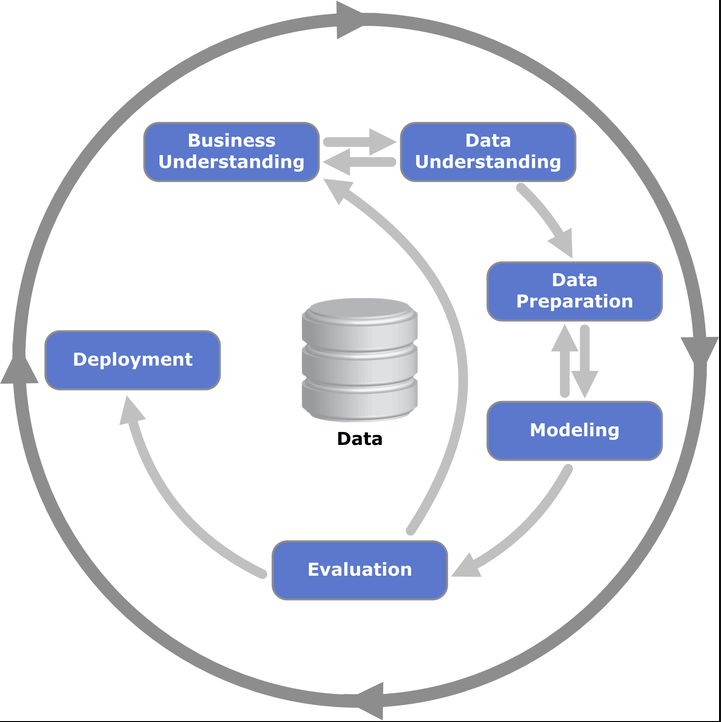Comments
- No comments found

There are many similarities between machine learning and cooking.
Both fields involve following a set of instructions, experimenting with variations, and making adjustments based on feedback to arrive at a desirable outcome. In this article, we'll explore some of the ways that machine learning and cooking are similar, and provide some examples of how these similarities play out in practice.

Just as a chef relies on a recipe to create a delicious dish, a machine learning algorithm depends on a set of instructions to perform its task. In both cases, the recipe serves as a guide to ensure that the process is carried out correctly and consistently. Without a recipe, a chef might forget an important ingredient or miss a crucial step, resulting in a less than optimal outcome. Similarly, without clear instructions, a machine learning algorithm might fail to learn or produce accurate results.
For instance, imagine a chef who wants to make a classic French dish like coq au vin. Without a recipe, they might not know to marinate the chicken in red wine overnight, or to use bacon to add depth to the flavor. In the same way, a machine learning algorithm might not be able to recognize patterns in data or make accurate predictions without clear instructions on what to look for and how to analyze the data.
Cooking and machine learning both involve a process of experimentation and iteration, where small changes are made to a recipe or algorithm to improve the final result. Chefs might adjust the amount of salt, add a different spice, or cook the dish for a few minutes longer to get the desired flavor and texture. Similarly, machine learning algorithms might adjust the weights of different features, change the learning rate, or try a different activation function to improve their accuracy.
For example, if a chef is making a chocolate cake and finds that the cake is too dry, they might try adding more butter or reducing the baking time to achieve a moister texture. In the same way, if a machine learning algorithm is producing inaccurate results, it might adjust the parameters to improve its performance. This process of experimentation and iteration is crucial to both cooking and machine learning, as it allows for continual improvement and refinement.

In both cooking and machine learning, feedback is essential for improving the outcome. Chefs might taste a dish and adjust the seasoning, or ask for feedback from diners to improve their recipes. Similarly, machine learning algorithms rely on feedback to improve their accuracy and performance. In the case of supervised learning, the algorithm is trained on labeled data and receives feedback in the form of correct and incorrect predictions. In unsupervised learning, the algorithm receives feedback from the clustering or dimensionality reduction techniques used to analyze the data.
As an example, if a chef is making a soup and finds that it's too salty, they might add more water or vegetables to balance out the flavors. In the same way, if a machine learning algorithm is producing inaccurate results, it might adjust its weights or parameters based on feedback from the data. This process of feedback and adaptation is crucial to both cooking and machine learning, as it allows for continual improvement and refinement.
Finally, both cooking and machine learning require creativity and innovation to achieve truly exceptional results. Chefs might experiment with new ingredients or techniques to create unique and memorable dishes. Similarly, machine learning researchers might develop new algorithms or apply existing algorithms in novel ways to solve complex problems.
For example, a chef might develop a new recipe that combines unexpected flavors, like a watermelon and feta salad or a bacon-wrapped fig appetizer
Similarly, machine learning researchers might develop new algorithms that are more efficient, accurate, or can handle larger datasets. For instance, deep learning architectures such as convolutional neural networks (CNNs) and recurrent neural networks (RNNs) have revolutionized the field of image and speech recognition, natural language processing, and autonomous driving.
Moreover, creativity and innovation also come into play when adapting a recipe or algorithm to new situations or constraints. Chefs might need to adjust a recipe to accommodate dietary restrictions or ingredient availability, while machine learning practitioners might need to develop algorithms that can operate in low-resource settings or with incomplete data.
For instance, a chef might need to create a vegan version of a classic dish like lasagna by substituting tofu or cashew cheese for ricotta and using plant-based meat alternatives. In the same way, machine learning practitioners might need to develop algorithms that can learn from sparse or noisy data, or operate with limited computational resources.

While cooking and machine learning might seem like completely different activities, they share many similarities in terms of following a recipe, experimentation and iteration, feedback and adaptation, and creativity and innovation. Understanding these similarities can help us appreciate the complex and fascinating processes that go into creating a delicious dish or a powerful machine learning algorithm.
Whether you're a chef or a machine learning practitioner, the key to success is to be patient, curious, and willing to learn from your mistakes. By embracing the similarities between these two fields, we can continue to push the boundaries of what's possible and achieve truly remarkable results.
Leave your comments
Post comment as a guest